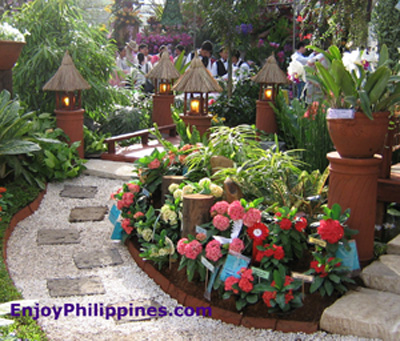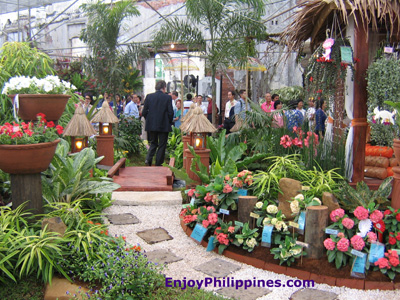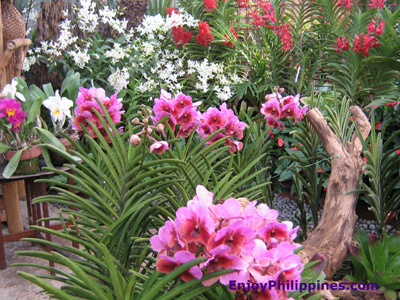Flora Filipina 2006
Commercial growers and hobbyists have cited the great potential of the Philippines as a major exporter of ornamental horticulture products. At the opening ceremony of the Flora Filipina Expo in February 2006, the Philippine Horticultural Society Inc. and the Philippine Orchid Society have committed to join together in putting the local industry at par with those of Thailand and Singapore.
“The right time to do it is now,” orchid society president Kelvin Manubay said. “The Philippines’ potential to be an exporter of orchids and ornamental plants is very, very high.”
Manubay said that at present, the Philippines accounts for only 0.02 percent of the $97.2 billion global trade of horticultural products. “We can do much more than that,” he said.

This was echoed by horticulture society president Peter Joseph Nepomuceno, who said that the P100 million local industry at present should be growing much bigger, because of the wealth of endemic flowering plants in the country.
“We should make horticulture an income-growing industry that will help the economy grow and provide more jobs for the Filipinos,” he said.
Nepomuceno said that a hectare of agricultural land planted to ornamental plants can employ up to 40 people.

He said the ongoing Flora Filipino has drawn international buyers from all over the world. The exhibit will be held at Plaza San Ignacio in Intramuros, Manila until March 6 this year.
Earlier, Tourism Secretary Joseph Durano cited the potential of the local horticultural industry as a viable income-generating industry that can complement government’s efforts in attracting foreign tourists.
Government scientists admitted that the Philippines is an ideal location for ornamental plants growing, given its ideal climate for year-round cultivation, capability to grow tropical and semi-temperate plants, availability of lands and production technologies, richness and variety of Philippine flora, competitive wage rates and location costs, and proximity to major importing countries in Asia-Pacific.

The local industry consists of products such as fresh cutflowers, live plants, and dried ornamentals. The most commonly grown cutflowers in the country include orchids, roses, anthurium and chrysanthemum.
Major production areas are Bulacan, Metro Manila, Tagaytay, Laguna, Cebu, Iloilo, Negros Oriental Zamboanga, Davao and Bukidnon.
Horticultural organizations in the country are composed of hobbyists and commercial growers. The exhibit’s sales area had 102 booths that feature a wide selection of plants such as orchids, arcids, palms, Bromeliads, ferns, cycads, conifers, landscaping plants, Bonsai, and other materials.

Other groups that have participated in the exhibit were the Philippine Bonsai Society; Cacti and Succulent Society of the Philippines; Flora Garden of Lucena, Quezon; Natural Stone Society of the Philippines; King Louie Flower Center; Flower Club Philippines, Los Baños; Ocram Society; Ikebana International and the Fern Society of the Philippines.